Wow. Two observing sessions within a week of each other. I’m spoilt!
Quite a bit of clear sky around this evening, but at 10:30 when I opened up, it was still bright enough that only the planets and a few principle bright stars were visible. There are some nights where you know it’s going to be clear all night and this was one of them, so I had a bit of time to plan the evening.
I still wanted to tick off a few remaining items on my Messier and Caroline Herschel lists. Of the messier objects remaining, I was clutching at straws with the first two observations. Both were buried in the bright murk 9 and 10 degrees above the horizon. Even when conditions are ideal, this is really too low an altitude to observe here, so I wasn’t expecting to see much – I wasn’t disappointed, as I didn’t 🙂
While it was clear, it was a little hazy up top. Seeing was excellent, but transparency varied throughout the session. It never really got dark either, with the sky through the eyepiece looking more a murky dark Grey than Black.
Session Data
- Date: 27/05/2014
- Time: 22:01 – 00:26 UT
- Temp: 9c,
- Air Pressure: 1016Mb,
- Humidity: 90%,
- Dew point: 8c,
- Wind Speed: 3.0 MPH .
- Seeing: I Perfectly Stable,
- Transparency: Mostly Clear.
M68
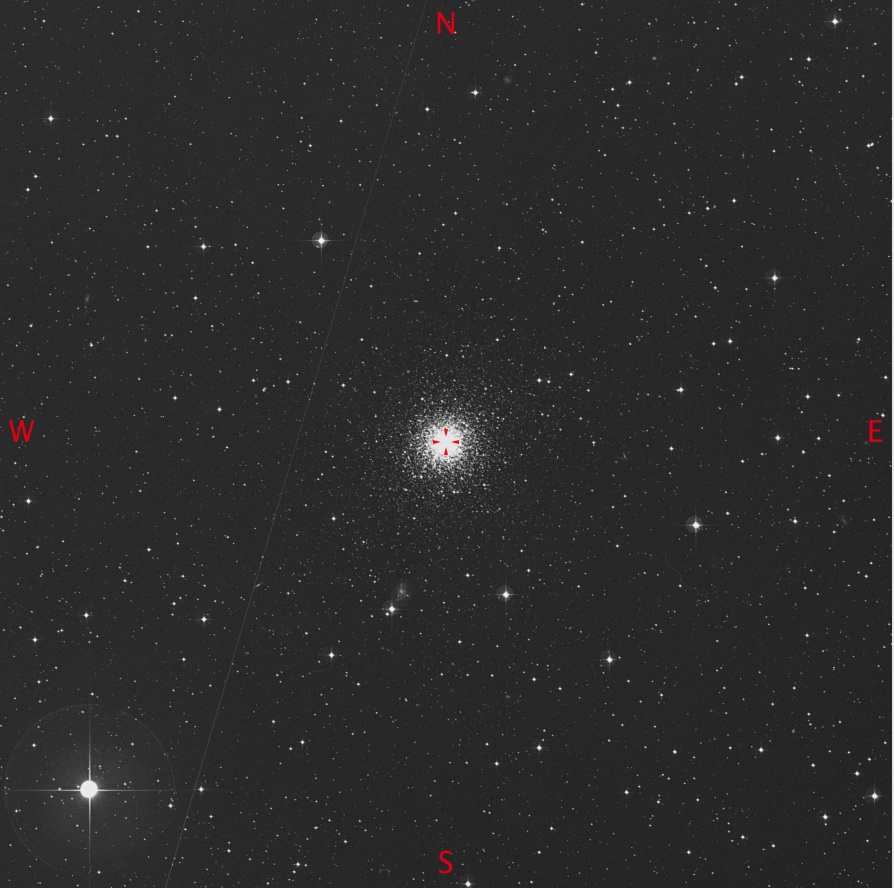
The object is 11 degrees above the horizon and buried in amongst all the atmospheric crap. I’m getting really desperate to finish off these last few Messier objects and this evening is probably not the best time to observe this, but there you go, I’ve seen it.
In the Altair Astro 250mm, Delos 14mm, 145 X, 29.8′, the cluster is barely visible, but is filling about a 1/4 of the FOV.
NEXT!
M83
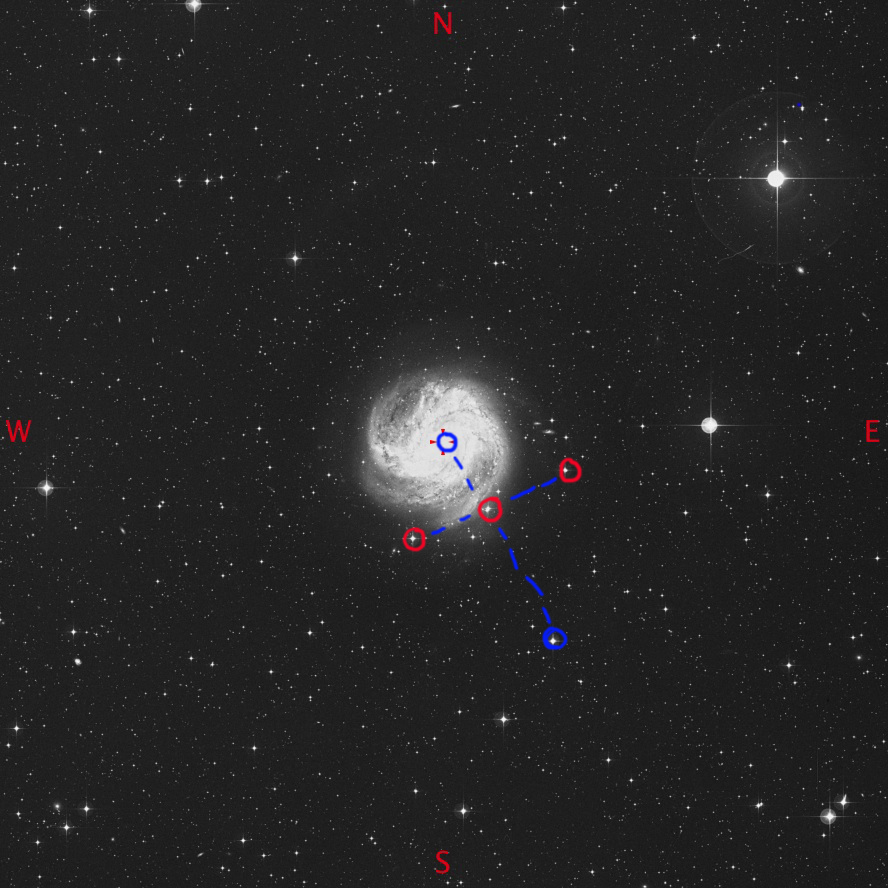
In the Altair Astro 250mm, Delos 14mm, 145 X, 29.8′, West is to the 9 O’Clock.
In the S/E and about 5 arc min from the galaxy core are three stars (marked in Red on the image) of 10.0, 11.0 and 10.0 mag. The core, which is all you can see, is located to the N/W and in between two Southerly 10.0th and the 11.0th mag stars . No other detail in the galaxy was seen.
If I move the galaxy core to the West a little, a fourth 9.0th mag star appears at the edge of the FOV at the S/E. When look again all these stars and the galaxy core form a miniature Cygnus ( marked in Blue on the image) with the 9.0 mag star being Albireo and the galaxy core being Deneb.
M67
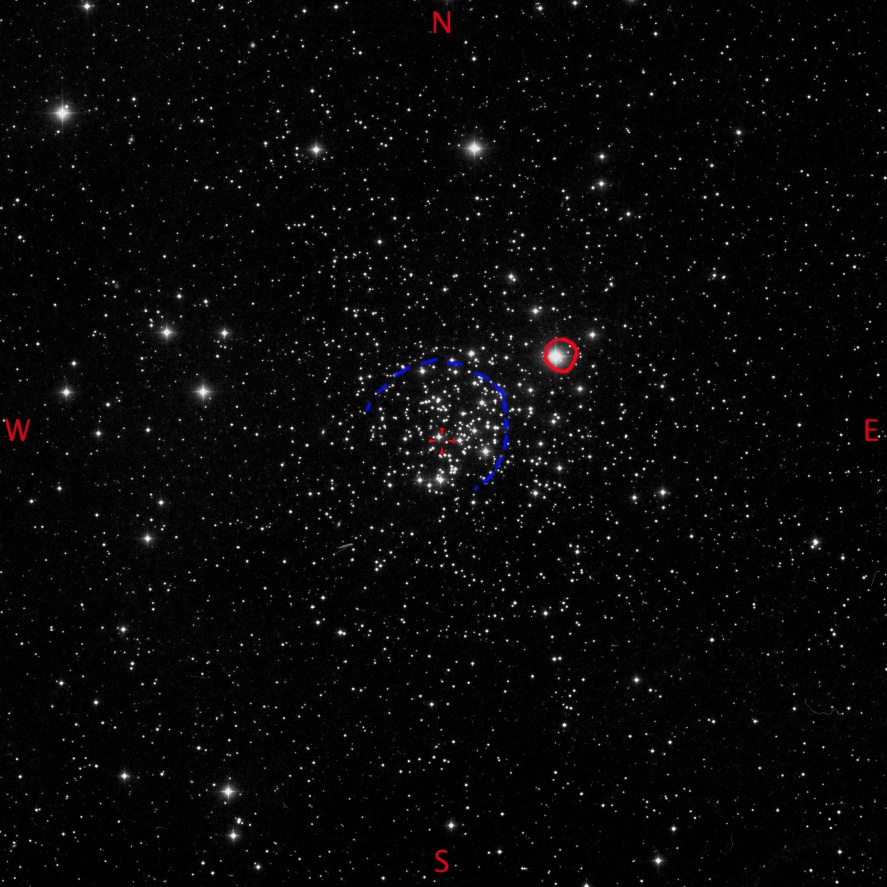
In the Altair Astro 250mm, UWA 18mm, 113 X, 35.6′, West is to the 1 O’Clock.
The brightest star in the FOV is 8.0 mag at the N/E ( marked in Red on the image) and about 10 arc mins out. The Cluster forms an open U shape ( marked in Blue on the image) with the opening to the S/W. The S/E side is more populated with at least 6 bright stars, where on the N/W side they all appear a little fainter, with maybe 5 bright stars. It’s still not really dark out there. The background is a muddy dark Grey rather than Black, so I guess I’m not seeing anywhere near the number of fainter stars that the chart is showing.
In the Altair Astro 250mm, Delos 14mm, 145 X, 29.8′ nothing more peeks out of the gloom, so the 18mm has it for looks.
NGC225
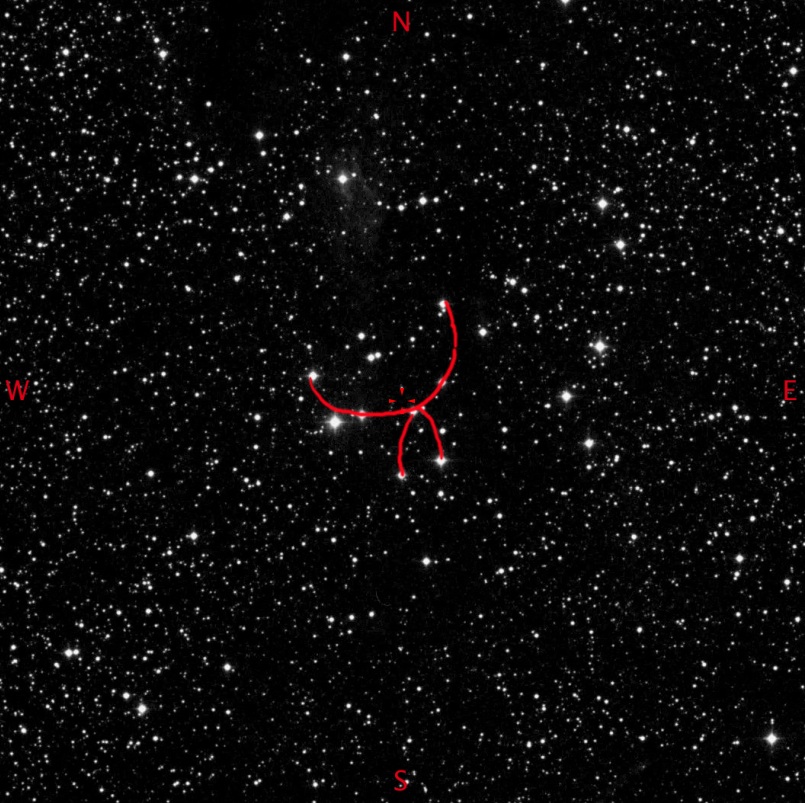
In the Altair Astro 250mm, UWA 18mm, 113 X, 35.6′ West is to the 9 O’Clock.
The body of this open cluster fills about 20 arc mins of the FOV. This is another of those clusters that looks like a cup and in this particular case a Chalice made up of about seventeen 10.0 -11.0 mag stars. The cup is orientated N/W – S/E. It certainly doesn’t look like a Sailboat to me!
Switching to the Altair Astro 250mm, Plossl 40mm, 51 X, 52′, the view is much better, but still no sailboat 🙁
Berkley 3, Stock 24
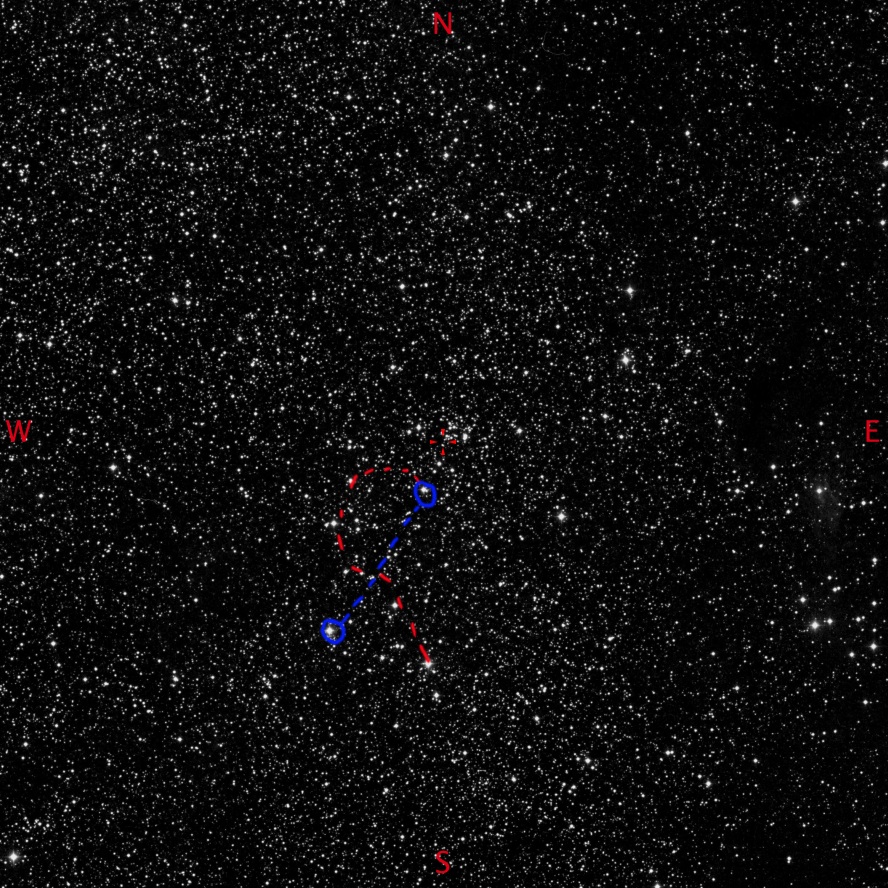
In the Altair Astro 250mm, Plossl 40mm, 51 X, 52′, West is to the 10 O’Clock.
There is a group of 9.0 mag stars to the S/W which form a reversed ‘?’ ( marked in Red on the image) with the head pointing towards the N/W. To the N/E of this is Berkeley 3, which is very, very small. Blink and you would miss it, as the whole FOV is filled with a random sprinkling of very faint stars, some of which also form small cluster groups!!
Switching to the Altair Astro 250mm, UWA 18mm, 113 X, 35.6′, there looks to be two guide stars ( marked in Blue on the image). SAO11308 at 9.0 mag to the edge of the FOV in the S/W and SAO11316 at 9.0mag just outside the cluster circle marked on the chart.
Changing to the Altair Astro 250mm, Delos 14mm, 145 X, 29.8′, provides the best views. This cluster is very very small and seems to consist of five or six 10.0 to 13.0 mag stars. Looking at the DSS image later, you really wonder how you would decide these stars were a cluster as opposed to any other grouping of stars in the FOV.